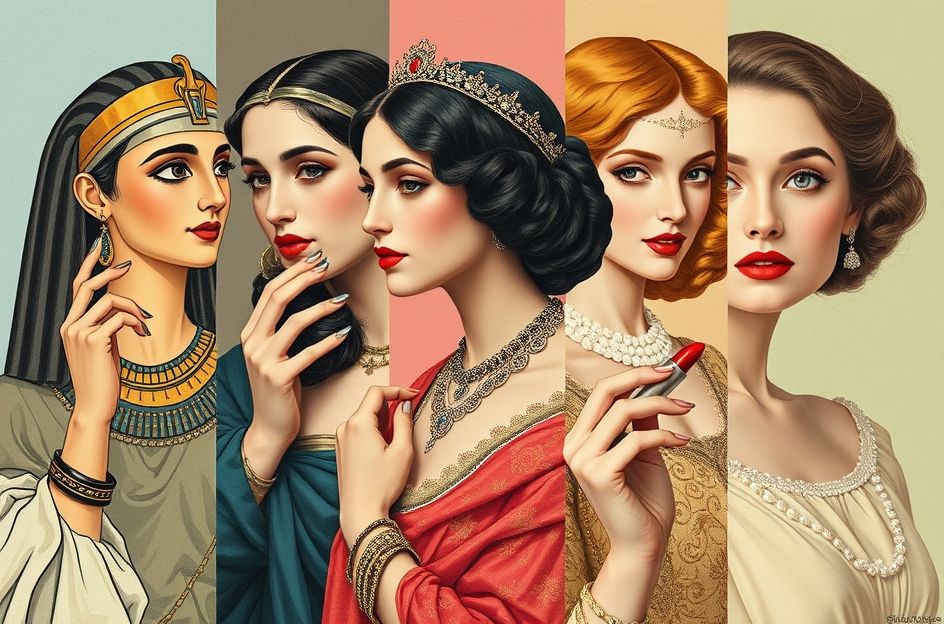The global cosmetics industry is a multi-billion dollar enterprise, but its origins are far from modern. The desire to enhance appearance has ancient roots, evolving through various cultures and eras. This article explores the fascinating history of cosmetics, revealing the practices and motivations behind beauty rituals across time.
Ancient Egyptians, over four millennia ago, placed immense importance on cleanliness and aesthetics. They believed appearance reflected the spirit, striving to look and smell appealing. Cosmetics were more than mere adornment; they served practical and symbolic purposes. Mesdemet, a blend of lead and copper ore, acted as eyeshadow, believed to ward off evil and deter insects. Kohl, a dark mixture of lead, ash, ochre, copper, and burnt almonds, lined the eyes. Cheeks were rouged with red clay and water, while henna painted fingernails in vibrant orange and yellow hues.
As civilizations interacted, the Greeks adopted cosmetic practices from the Egyptians. However, their beauty routines sometimes took a dangerous turn. Pale skin was highly prized, achieved with lead-based foundations – a practice that often proved fatal. The Romans further embraced cosmetics, shifting the focus from functionality to extravagance. They adorned their nails with a mixture of sheep’s blood and cooked fat. A Roman saying encapsulated the era’s sentiment: “A woman without paint is like food without salt.”
Post-Egyptian era, pale skin remained a global beauty standard. Sun-kissed skin signified labor and poverty, while a fair complexion indicated wealth and leisure. To achieve this coveted look, women (and men) applied powders containing hydroxide, lead oxide, and carbonate. The deadly side effect of lead poisoning eventually spurred 19th-century chemists to develop a safer alternative: zinc oxide. This innovation allowed skin to breathe and remains a staple in cosmetics today.
The Edwardian era in England saw affluent women indulging in lavish parties, intensifying the pressure to be the most beautiful. City life, with its pollution, poor diets, and lack of exercise, accelerated aging. Anti-aging creams and salon treatments became essential. Salons like the House of Cyclax, known for its discreet entrances, offered foams and rouges to women desperate to conceal their age. Mrs. Henning, the owner, created numerous products for her image-conscious clientele.
Today’s consumers benefit from a vast array of cosmetic choices, thanks to the evolution of beauty practices throughout history. The enduring desire to enhance appearance, passed down through generations, fuels the thriving cosmetics industry. So, next time you apply your makeup, remember the women who came before you and their commitment to self-enhancement, even on days when they probably didn’t feel like it.
